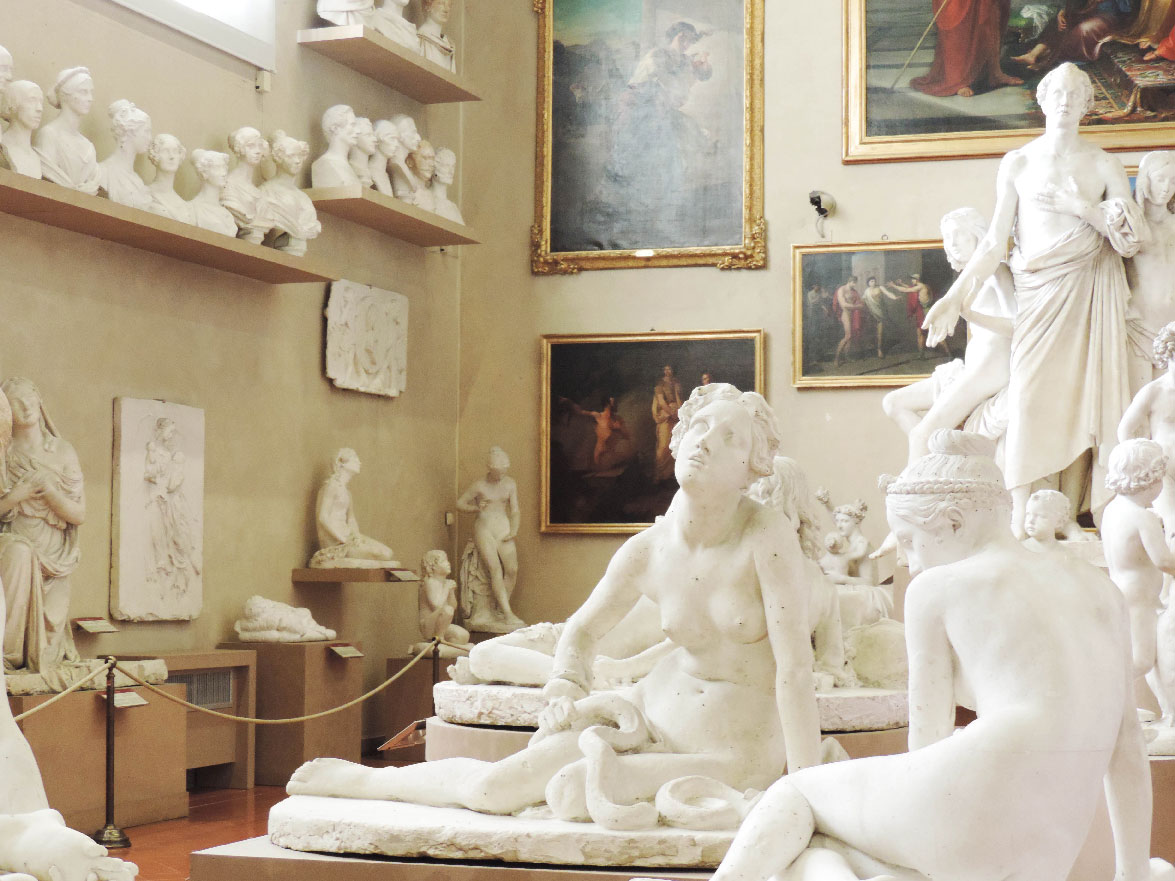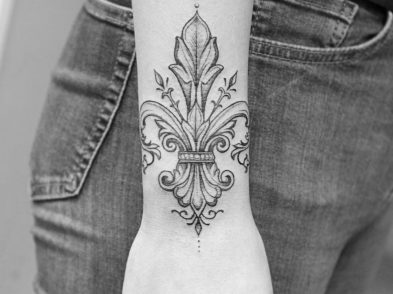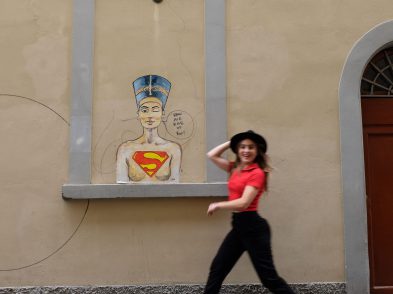Synonymous with Michelangelo’s David, the Galleria dell’Accademia’s attraction as a tourist destination is largely due to the Renaissance masterpiece, but the museum is home to so much more, boasting collections like a musical instrument display and a hall of plaster casts, not to mention a host of other Late-Medieval and Renaissance works worthy of more than a passing glance. Here are four things to see in the Accademia beyond the David.
Ph. Plaster Casts Gallery in the Accademia | Ph. Leo Cardini
Plaster Casts Gallery
Before even catching a glimpse of the David, visitors are greeted with the remarkable 1:1 model of Giambologna’s Rape of the Sabine Women. One could say that this opening work is a preview of the mesmerizing collection of plaster casts to come. To the left of Michelangelo’s masterpiece is the Gipsoteca, filled primarily with casts made by famed 19th-century sculptor Lorenzo Bartolini, a graduate of the Florentine Academy of Fine Arts, to whom the collection originally belonged. The sculptures Bartolini would go on to make, based on the models located here, are housed in museums across the world, including the Nymph and the Scorpion, today found in Paris’ Louvre.
Department of Musical Instruments
The elegant display of musical instruments sets itself apart, both for its subject matter and the variety of objects on display. Beginning with a description of how instruments make their respective sounds, the exhibition continues with a display of instruments coming from the collections of the Medici and Lorraine families. Additionally, overviews are given of how music developed within the courts of both families, influencing the history of music itself, and of the invention of the piano. Prized pieces on display include a 1690 tenor viola and cello by Antonio Stradivari and an oval spinet and ebony harpsichord by Bartolomeo Cristofori. The display also offers multimedia stations for visitors to interact digitally with the instruments and hear the sounds of a bygone era.
Altar front, Coronation of the Virgin between Angels and Saints
Made to grace the altar in the Church of Santa Maria Novella, this masterpiece in fabric is extraordinary for its decoration and its perfectly preserved state after nearly 700 years. Embroidered with threads of gold and silver by Jacopo Cambi in 1336, the work depicts the Coronation of the Virgin between Angels and Saints. Standing out among the 13th- and 14th-century paintings, the work is a testament to the high appreciation of textile arts in 1300s Florence.
13th- and 14th-century paintings
The Accademia hosts a rich collection of 13th- and 14th-century paintings that can be considered as key to understanding the evolution of Renaissance art, eventually leading to the creation of Michelangelo’s David. Bernardo Daddi, a presumed student of Giotto, is on full display in the final rooms of the ground floor, but head to the first floor rather than the exit and you’ll find an incredible range of early-Renaissance paintings that can satisfy any enthusiast’s cravings for great art in Florence.Works by famed artists like Taddeo and Agnolo Gaddi, Andrea Orcagna and Maestro della Maddalena, among others, take center stage, not to mention the recently acquired works by Mariotto di Nardo, which add to the line-up of gold-backed panel paintings.









